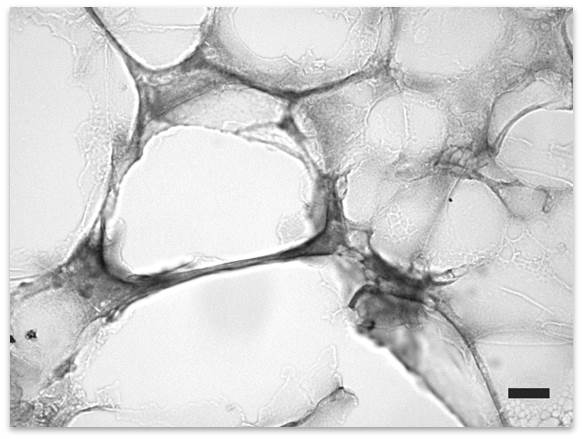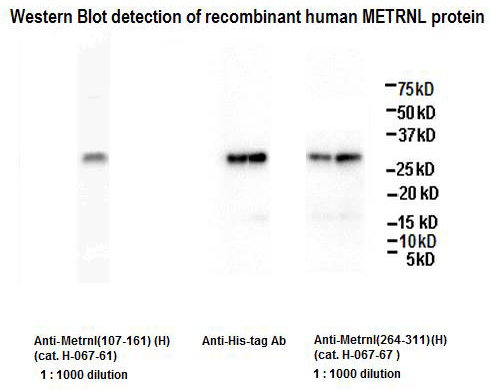Cytokines are involved in many functions of the immune system including initiating, amplifying and resolving immune responses. Through bioinformatics analyses of a comprehensive database of gene expression (BIGE: Body Index of Gene Expression) we observed that a small secreted protein encoded by a poorly characterized gene called meteorin-like (METRNL), is highly expressed in mucosal tissues, skin and activated macrophages. Further studies indicate that Metrnl is produced by Alternatively Activated Macrophages (AAM) and M-CSF cultured bone marrow macrophages (M2-like macrophages). In the skin, METRNL is expressed by resting fibroblasts and IFNγ-treated keratinocytes. A screen of human skin-associated diseases showed significant over-expression of METRNL in psoriasis, prurigo nodularis, actinic keratosis and atopic dermatitis. METRNL is also up-regulated in synovial membranes of human rheumatoid arthritis. Taken together, these results indicate that Metrnl represents a novel cytokine, which is likely involved in both innate and acquired immune responses.
Ushach I, Burkhardt AM, Martinez C et al., Clin Immunol. 2014 Dec 5;156(2):119-127. doi: 10.1016/j.clim.2014.11.006. [Epub ahead of print]
Exercise training benefits many organ systems and offers protection against metabolic disorders such as obesity and diabetes. Using the recently identified isoform of PGC1-α (PGC1-α4) as a discovery tool, we report the identification of meteorin-like (Metrnl), a circulating factor that is induced in muscle after exercise and in adipose tissue upon cold exposure. Increasing circulating levels of Metrnl stimulates energy expenditure and improves glucose tolerance and the expression of genes associated with beige fat thermogenesis and anti-inflammatory cytokines. Metrnl stimulates an eosinophil-dependent increase in IL-4 expression and promotes alternative activation of adipose tissue macrophages, which are required for the increased expression of the thermogenic and anti-inflammatory gene programs in fat. Importantly, blocking Metrnl actions in vivo significantly attenuates chronic cold-exposure-induced alternative macrophage activation and thermogenic gene responses. Thus, Metrnl links host-adaptive responses to the regulation of energy homeostasis and tissue inflammation and has therapeutic potential for metabolic and inflammatory diseases.
Rao RR, Long JZ, White JP et al., Cell. 2014 Jun 5;157(6):1279-91. doi: 10.1016/j.cell.2014.03.065.
AIMS:
Adipose tissue releases adipokines that play important roles in metabolic and cardio-cerebro-vascular homeostasis. This study was to discover novel adipokines using caloric restriction model.
METHODS:
Adipokine candidates were captured by gene array and bioinformatics analysis and verified by preparation of recombinant protein and antibody.
RESULTS:
We established a potential secreted protein database containing 208 genes and identified a novel adipokine, Subfatin, that was the highest expressed in subcutaneous fat of both rodents and humans among 15 detected tissues. The secreted mammalian Subfatin was a glycosylated protein. Subfatin was located diffusely throughout the adipose tissue except lipid droplets, with comparable expression between adipocytes and stromal cells, but much lower expression in macrophages than adipocytes. Subfatin was downregulated in white adipose tissue of caloric restriction rats, whereas dramatically upregulated during white adipocyte differentiation as well as in white adipose tissue of diet-induced obese mice. Subfatin was annotated as Meteorin-like (Metrnl) in public databases, a similar transcript of Meteorin (Metrn, also known as glial cell differentiation regulator). Meteorin displayed a brain-specific expression and was scarce in various adipose tissues, in contrast to the tissue expression patterns of Subfatin.
CONCLUSIONS:
Subfatin is a novel adipokine regulated by adipogenesis and obesity, with tissue distribution different from its homologue Meteorin.
Li ZY, Zheng SL, Wang P, et al., CNS Neurosci Ther. 2014 Apr;20(4):344-54. doi: 10.1111/cns.12219. Epub 2014 Jan 7.
BACKGROUND:
The pax2/5/8 genes belonging to the PAX family of transcription factors are key developmental regulators that are involved in the patterning of various embryonic tissues. More particularly, their function in inner ear specification has been widely described. However, little is known about the direct downstream targets and, so far, no global approaches have been performed to identify these target genes in this particular tissue.
RESULTS:
Here we present an original bioinformatics pipeline composed of comparative genomics, database querying and text mining tools, which is designed to rapidly and specifically discover PAX2/5/8 direct downstream targets involved in inner ear development. We provide evidence supported by experimental validation in medaka fish that brain 2 (POU domain, class 3, transcription factor 2), claudin-7, secretory pathway component sec31-like and meteorin-like precursor are novel direct downstream targets of PAX2/5/8.
CONCLUSIONS:
This study illustrates the power of extensive mining of public data repositories using bioinformatics methods to provide answers for a specific biological question. It furthermore demonstrates how the usage of such a combinatorial approach is advantageous for the biologist in terms of experimentation time and costs.
Ramialison M, Bajoghli B, Aghaallaei N et al., Genome Biol. 2008 Oct 1;9(10):R145. doi: 10.1186/gb-2008-9-10-r145.

Courtesy by Dr. Dun, Temple University



